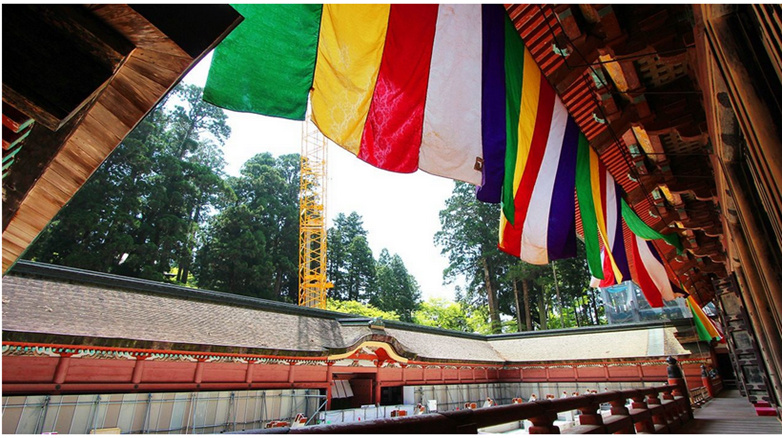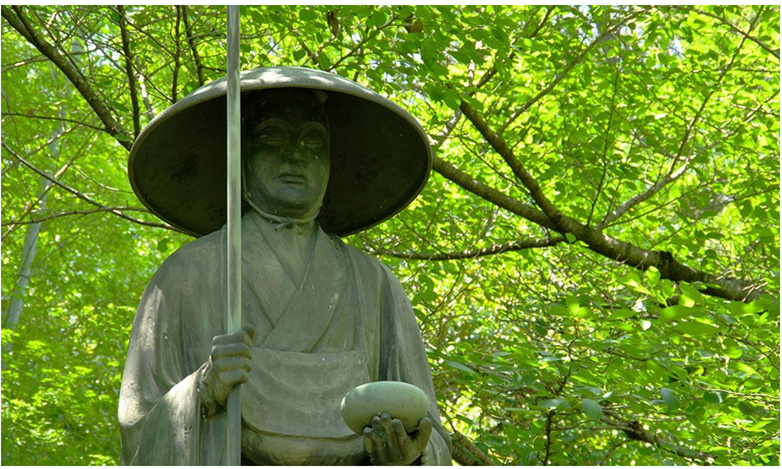Diversity of Buddhist beliefs in the Kamakura period

From the end of the Heian period to the Kamakura period, Buddhism in Japan underwent major changes, leading to the emergence of new sects and approaches based on the teachings of the Tendai School. Buddhism became a religion of importance among the general public for the first time. With the advent of Zen Buddhism, which focuses on meditation, a diverse Buddhist world has emerged.
?How did the Tendai School give rise to new sects
The twelfth and thirteenth centuries marked a transitional period in Japan between the end of the imperial court and the rise of the samurai as the new ruling class. The period was also marked by rapid diversification within Japanese Buddhism. Previously the two great sects of esoteric Buddhism— the Tendai and Shingon schools —had vied with each other for influence and the patronage of powerful aristocratic supporters at court. But during the Kamakura period (1185-1333) new Buddhist groups emerged, each of which insisted on having the power of salvation through its own method and sacred texts. A period of conflict followed in which these different groups competed for power and influence.
The source of much of this diversity was the Tendai School. The Tendai teachings are a flexible mixture of all the different schools of Buddhist thought that emerged over many centuries in India and China, so this school formed fertile ground for the emergence of new groups when people were looking for new interpretations of Buddhist ideas. The monks who trained at the Tendai School became dissatisfied with the mind-numbing complexity and fallacies of the school's attempt to bring the diverse doctrines of Buddhism together into a single crucible. As different monks searched for stronger and more coherent explanations of the world, they became involved in different streams of the various philosophies incorporated into Tendai's teachings, and each group began to proclaim its own philosophy as the true version of the faith. This happened many times during this period of turmoil and change, giving rise to many new Buddhist schools that vigorously competed with each other to attract followers.

During this new era, the search for salvation through beings of higher power was no longer limited to the narrow world of the court nobility. The door is now wide open to the entire Japanese society. Buddhism became - for the first time - a religion of real importance to ordinary Japanese people.
These new groups that emerged from the matrix of the Tendai School espoused doctrines that found favor not only among the nobility, but also among people from all sectors of society, including samurai, merchants, and farmers. At this time, the two major schools of esoteric Buddhism, which had previously been close to the court nobility, reacted to this movement by speaking for the first time to members of the common masses and offering them promises of salvation. Japanese Buddhism did not realize the important role that religion can play in alleviating human suffering until the twelfth and thirteenth centuries.
Pure Land Buddhism and the Lotus Sutra
The new groups emerging at that time were preaching methods of salvation that could be broadly divided into two main categories. The first was a view that assumed the existence of an ideal world separate from this world inhabited and ruled by a powerful Buddha. By praying to this Buddha, it was believed that people could be reborn in his heaven after death. This doctrine states that we can escape from this world of suffering to a better world. A classic example of this type of thinking is the 'Pure Land' philosophies founded by preachers such as Hōnen (1133-1212) and Shinran (1173-1262).
The other major school of thought postulated the existence of an invisible Buddha present all around us in the present world. By reciting certain sutras and performing certain rituals, we can harness the powers of this Buddha to change the world into a more enjoyable and peaceful place. This doctrine teaches us that we can change our reality through the power of faith. The most famous example of this type of belief is the Lotus Sutra school founded by Nichiren (1222-1282).

From the perspective of the two major founding schools of esoteric Buddhism, the arrival of these new groups preaching improved versions of one branch of Buddhist doctrine was highly unwelcome, as it threatened to undermine the established interests of existing sects. This hostility turned violent as these new groups expanded their influence, with armed conflicts and political repression erupting across the country. But the growing popularity of these rising voices that directly addressed the aspirations of ordinary people proved impossible to stop. The influence and power of these groups expanded unstoppably.
Thus, Japanese Buddhism developed a tripartite structure: there was the Shingon School, which espoused purely esoteric beliefs, the Tendai School, which taught a mixture of unified Buddhist philosophies in an exclusive atmosphere, and new religious groups that began to focus on one branch of the disparate philosophies espoused by the Tendai School. . Eventually, after a period of conflict, a kind of division occurred, with each different school taking its own place in the religious environment. As is evident in this process of diversification, the foundations of much of modern Japanese Buddhism are built on the worldview of esoteric Buddhism.
The ascetic thought of Zen Buddhism
In the early years of the Kamakura period Zen Buddhism was added to the mix. Zen was a new version of Buddhism that began during the 5th or 6th century under its legendary founder, Bodhidharma, who is said to have brought the teachings of that religion to China in the 5th or 6th century. Buddhism as taught by Shakyamuni in India was originally a system of teachings whose followers aimed to reform the self through meditation and other spiritual practices. He laid down a detailed 'curriculum' for these practices in the early teachings. Buddha clearly laid out the procedures by which a person can move along the path of enlightenment with the goal of ultimate liberation from suffering. Zen Buddhism redefined this experience as something mysterious that transcends words, can only be understood through experience, and cannot be conveyed in language. Therefore, in relation to the daily life of monks and other practitioners, Zen Buddhism emphasized the focus devoted to the state of meditation itself above all else. This new sect emphasized a life of learning and contemplation rather than simply a philosophy or worldview.
These characteristics made Zen Buddhism popular among Chinese literati, and the teachings quickly spread starting in the eighth century. Then in the 12th and 13th centuries, Zen began to reach Japan. There are three sects of Zen in Japan today: Rinzai, Soto, and Obaku. The Rinzai and Soto sects were founded during the first period of Zen's expansion outside China. The Obaku school arrived later when Ingen (1592-1673) brought it to Japan in the 17th century.

Because of Zen Buddhism's unique approach of placing importance on a life of meditation and learning, it does not have a fixed set of doctrines. For example, Eisai, the founder of the Rinzai School, was an admirer of esoteric Buddhism, while Dogen, the founder of the Soto School, developed his own philosophy based on the idea that we all have a Buddha nature within us and can awaken to this truth through the experience of meditation. Although the three major Zen schools in Japan have different philosophies, they are united by an ascetic and intellectual approach to life centered around rigorous meditation practices. This approach was adopted by many educated people in Japan's Kamakura period, and proved particularly influential among the new elite of the samurai warrior class. Zain served as an important conduit, helping to bring the latest cultural innovations from China to the country. Zen Buddhism has always had close associations with ikebana, tea rituals, Noh drama, and other Japanese art forms characterized by the wabi-sabi aesthetic of rugged simplicity, qualities that reflect the Zen philosophy of an austere mental lifestyle. To some extent based on learning and reflection.
In this way, four major versions of Buddhism took root in Japan during the Kamakura period. In addition to the esoteric schools already in existence since the Heian period (794-1185), two schools now promised salvation to their followers: the Pure Land sects and the Lotus Sutra sect, as well as Zen Buddhism, which advocated an ascetic life devoted to enlightenment through meditation. The foundations of Japanese Buddhism that were laid in those years lasted for 800 years and continue to this day.
The journey back of Japanese Buddhism to its starting point
Comparing the history of Buddhism in India with the development of this religion in Japan is an interesting question. Buddhism began in India as a system of meditation and other spiritual practices based on the teachings of the historical figure Buddha. These teachings provided a way to liberate oneself from delusional thinking and the suffering it entails. These early teachings transformed over the centuries and became more esoteric, giving rise to various sects of Mahayana Buddhism that believed in the power of supernatural beings who could intervene to help humans achieve enlightenment and salvation. Finally, esoteric Buddhism emerged as a way to try to reunite these types of esoteric beliefs. This version of the faith eventually merged with Hinduism, causing Buddhism to disappear from the land where it was born.

As for Japanese Buddhism, it began with the introduction of esoteric Buddhism, which represented the final stage of the evolutionary process of Buddhism in India. In other words, the history of Buddhism in Japan begins at the end with the last and most recent form of this religion. Over time, people who felt that these teachings did not offer a true path to enlightenment turned to the vast repository of pre-Buddhist Mahayana esoteric doctrines kept alive through the teachings of the Tendai School, and chose from among them the one doctrine that seemed to offer them the best path to salvation, leading to Form their own groups based on this set of teachings.
This was the situation of Japanese Buddhism in the twelfth and thirteenth centuries. If we view Zen as a kind of Mahayana version of Shakyamuni's original teachings, we can accept the view that the original essence of Buddhist ideas was reintroduced into Japanese Buddhism at this time, at least in part. Japanese Buddhism went back from esoteric teachings to the doctrines of pre-esoteric Mahayana Buddhism and then back further to the teachings of the historical Buddha, albeit only partially. It has been a movement in the opposite direction throughout the long history of the development of this religion in Asia.
This situation continued until the nineteenth century. Then, in the years following the beginning of the Meiji Resurgence in 1868, Japan opened itself up to the world and actively sought to import ideas and knowledge from the outside world. For the first time, information about Theravada Buddhism, which was a direct successor to the original Indian Buddhism, entered Japan from Sri Lanka and Southeast Asia, bringing Japanese Buddhism back one step closer to the original starting point of the religion.

Thinking about the Japanese history of Buddhism in this way—as a kind of slide back in history to the time when it was born in India—is one way to understand the overall direction of the religion's development in Japan. As a result of this history, Japanese Buddhism today includes a compendium of almost all schools of Buddhist thought, ranging from philosophical approaches to enlightenment that approximate the original teachings of the historical Buddha to esoteric sects and everything in between. In this sense, Japanese Buddhism is a record of Japanese cultural and intellectual history, a living embodiment of many of the approaches that people across Asia have used to try to solve the mysteries of life over the course of 2,600 years or more.
Source : websites

